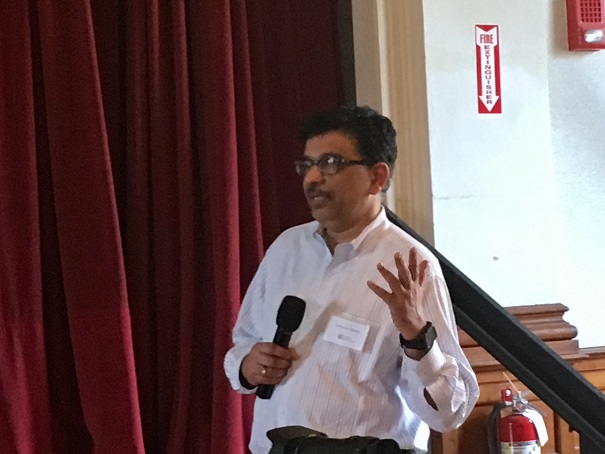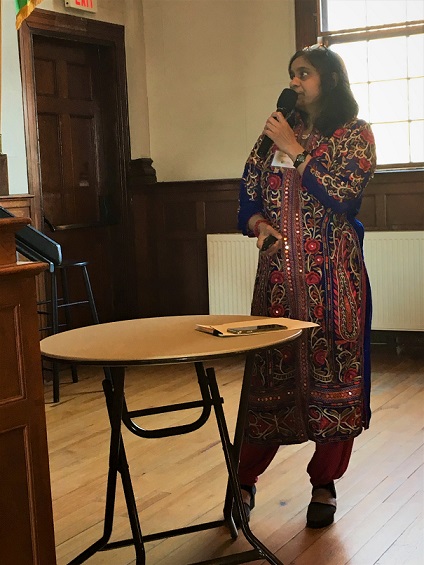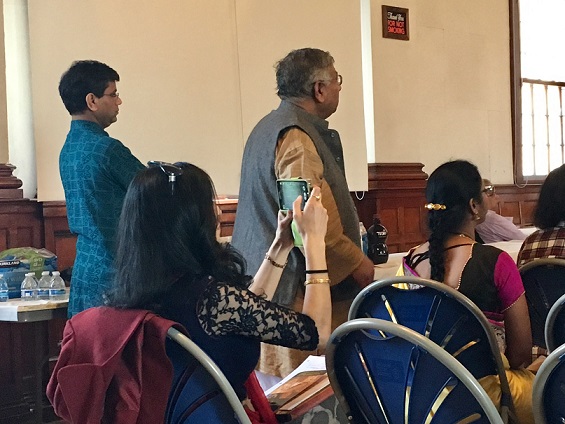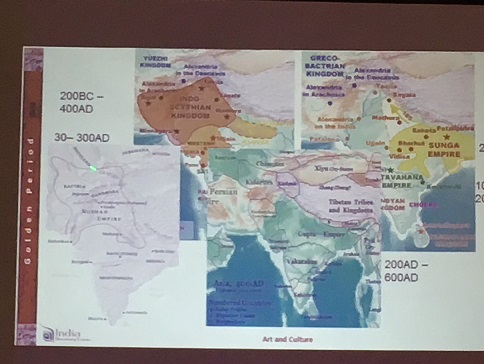Contribute
|
Aesthetics And Analysis - The Story Of Golden Period In India 200BC-500AD Part II – Presentations |
Prem Nagar
05/17/2018
“Aesthetics and Analysis†– The Story of Golden Period in India 200BC-500AD Part II – Presentations With the knowledge foundation created through the Classical Period, India entered a period of opulence in the period 200BC-500AD as manifested through the lifestyle, exports, art, sciences and literature. The mastermind to help create the peaceful and prosperous society was Kautilya, the scholar who is believed to have lived in fourth century BC. The major pronouncements of nonviolence as a practice in life by Mahavir of Jainism and the subsequent preaching of mutual friendship by Gautama Buddha did help steer the society towards individual freedom and fulfillment of life. The researchers in India Discovery Center tried to reconstruct the cultural history and presented their findings in six tracks in the seminar “Let us Explore India’s Cultural History – IV, The study of the Golden Period 200BC-500AD†on April 28, 2018, in Bemis Hall in Lincoln, MA. Each presentation was followed by a short Q&A session. Dr. Sonal Jhaveri moderated the presentations. She was also instrumental in helping to create and edit the presentations. Geography and People: Ms. Hardeep Mann presented the first track on “Geography and Peopleâ€. The country was populated with self-contained population centers that maintained trade and economic relations between them. The tax system was federated helping to support a creative life for all sectors in the society. She created a huge canvas by presenting her analysis and synergetic relationships of producers, traders and buyers that demonstrated well woven way of life. The village as an independent unit functioned well for agriculture, craftsmanship, art, culture and education operating in professional “guilds.†Families living together as tribes, multiple tribes forming clans and migration of these tribes and clans to cities triggered process of urbanization which intensified use of coin as currency. Language and Literature – Mr. Prem Nagar continued his analysis of “Language and Literature†that he had commenced through the Vedic Period. He emphasized that Panini’s codification of language through his enunciation of grammar became the corner stone in structuring the modern Indian languages. The voice-based syllable structure was scientific and was easily adaptable. Script development was a huge step forward in archiving scholarly material through books for circulation and dissemination. Education centers flourished for training new scholars in skills and analysis. The storytelling of oral literature evolved into massive undertakings of epic literature and poetic ornamentation. Books on drama, poetry, philosophy, religious discourses, story and trade showed the high literary output of the period. Philosophy and Religion – Dr. Satyendra Sharma extended his earlier analysis of the Classical Period to claim that the Golden Period led to the concept of “Freedom of Action†and free thinking. Classical Sankhya provided the logic to establish that the individual would not be responsible for his/her action as was the prevalent belief through the Vedas. Janinism taught “Anekantavadaâ€, the multiplicity of views, thus helped to create a social construct of mutual respect. Buddhism taught the concept of “sangha†enunciating the concept of personal sacrifice for the maintenance of the group. Erudite scholars in Vedanta, Jainism and Buddhism contributed prolific analytic literature on the nature of man and his/her conduct. Nagarjuna propagated his theory of Bodhisatva thus helping the spread of philosophy to the other South Asian countries. Independent thinking and groupism also gave rise to cults and sects that divided the tight society allowing foreign elements to creep in. Art and Culture – in a magisterial presentation, Dr. Krishnakali Dasgupta argued that the Golden Period contributed three aspects to Indian civilization: urbanization, sophistication and coding. Exploring the images of archaeological ruins, she presented the continued story of city planning, markets and urban construction all through the country. Bricks, stones, rocks, lime, clay and color were in use. She proceeded to show the examples of sophistication through fine ornamentation in the stone carving, color application in the frescoes and anatomical presentation in paintings and statues. She compared various schools of art and their skills in production. Finally, she spoke about the contribution of “coding†in art, sculpture, literature and drama. Bharata’s Natyashastra was a major contribution in depicting life in symbols and gestures. The technique entered literature and has continued until the modern times in the art and culture presentations in the country. Science and Technology - Dr. Bijoy Misra continued the track of “Science and Technology†as he had done through the Vedic Period. He pointed out the important contribution of Mahavir through the enunciation of a bounded universe. The concept helped the concept of large numbers and advances in mathematics. Musicology developed with the science of rhythm and perception in acoustics. A twenty-two unit “Shruti†system was established as the limit of human hearing. Astronomy developed with more observations and speculations emerged on the astronomical phenomena. Medicinal sciences had a strong growth with empirical healing techniques eventually with the development of yoga as a principle. Iron technology gave tools and dagger. Silk was produced and exported. Fine carvings in stone, metal and ivory created good export products. Carpentry was at its peak with fine boat making and boats plied to distant lands aided by navigation and sailing. Economy and Politics - Ms. Bhavani Vankineni, tried to navigate the structure of the society through economy and politics. The economy was established through a national tax structure that was graded for different sectors in the society. The principles of statecraft coded by Kautilya from empirical principles laid down through tradition were followed in the country. The administration was decentralized with the village as a self-governing unit. The king assumed the role of serving the people and assisting in the national prosperity. Trade and commerce was encouraged with road networks and infrastructure. The produce was plentiful and there was good industrial production of metals, forest products, herbs, silk and perfume. There was over all security and stability in society. A strong military helped to avert boundary incursions of invaders. Dr. Bijoy Misra in a review talk tried to summarize the findings of research by the workers in India Discovery Center. He cited that Indus Civilization could be known for its “Industry and Innovationâ€, the Vedic Period can be encrypted to “Language and Organizationâ€, the Classical Period emphasized “Literature and Conductâ€, while the Golden Period flourished in “Aesthetics and Analysis.â€
You may also access this article through our web-site http://www.lokvani.com/



